Connoisseurship
connoisseur: a discerning judge of the best in any field
The HPI Studio, curated by Heidi Pribell, is a soul-driven collection of antiques and decorative arts, which has placed fine and decorative art in distinguished museums and collections across the country including The Los Angeles County Museum – at the behest of actor and collector Steve Martin, The Museum of Fine Arts Boston, The Peabody Essex Museum and The Rhode Island School of Design Museum. Heidi continues to acquire exceptional pieces, many of which can be found in clients’ homes.
“The connoisseur might be defined as a laconic art historian, and the art historian as a loquacious connoisseur.”
-Erwin Panofsky, Meaning in the Visual Arts (1955)
The American Dream, Hudson River Valley
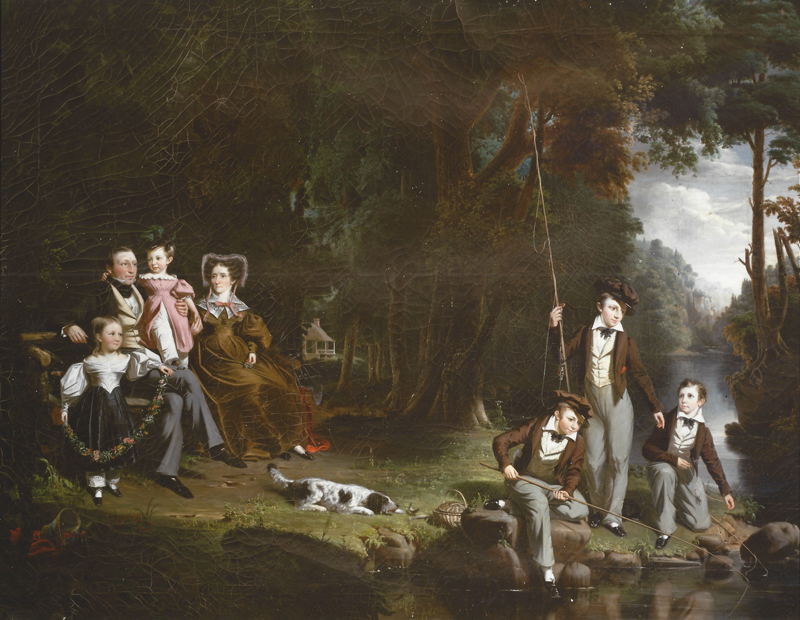
Sold to Los Angeles County Museum of Art,
and purchased with funds from actor Steve Martin
Family Portrait of Alexander Masterton, his Wife and Children,
by William Hamilton, 1834
oil on canvas 80” x 64”
American Folk Art Figure of Man in Military Dress, early 19th century
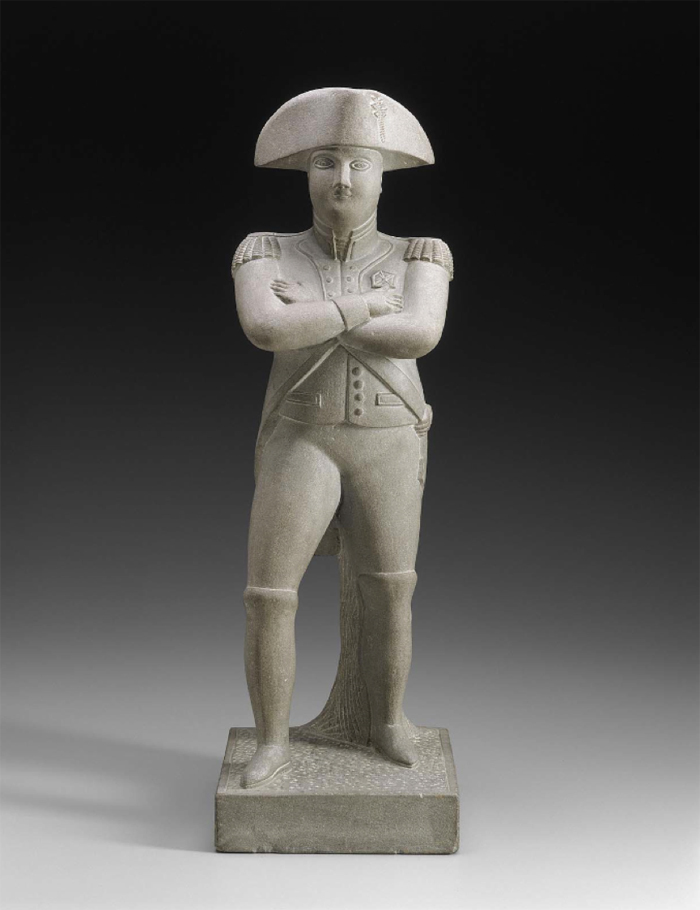
Sold to Boston’s Museum of Fine Arts in 1986
His Excellency George Washington Esquire
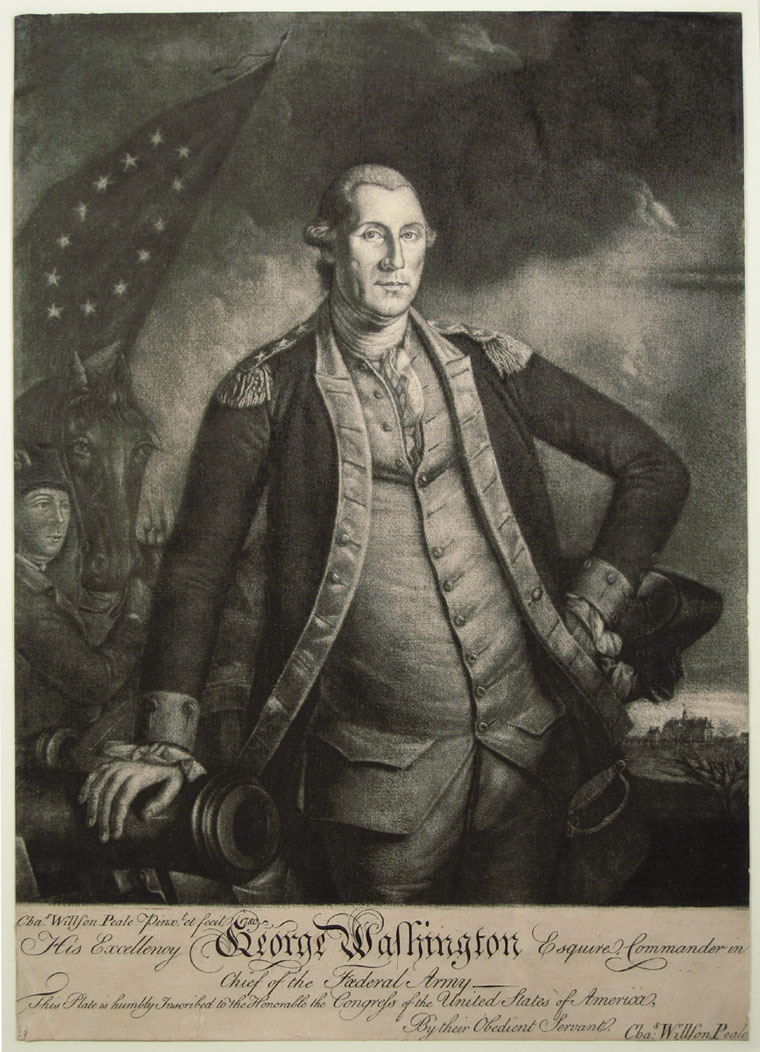
Sold to Washington’s Mount Vernon Plantation Home.
Mezzotint, by Charles Wilson Peale, dated 1780
Rare American Early Lighting
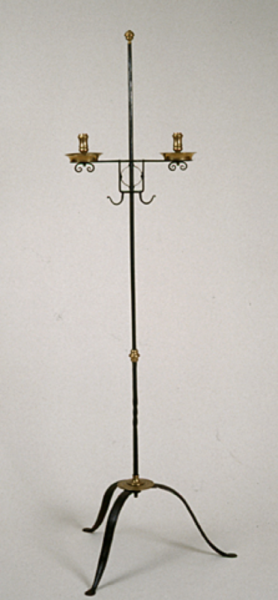
Sold to Historic Deerfield
A Benjamin Gerrish Candlestand, inscribed 1736.
Reclining Antiope
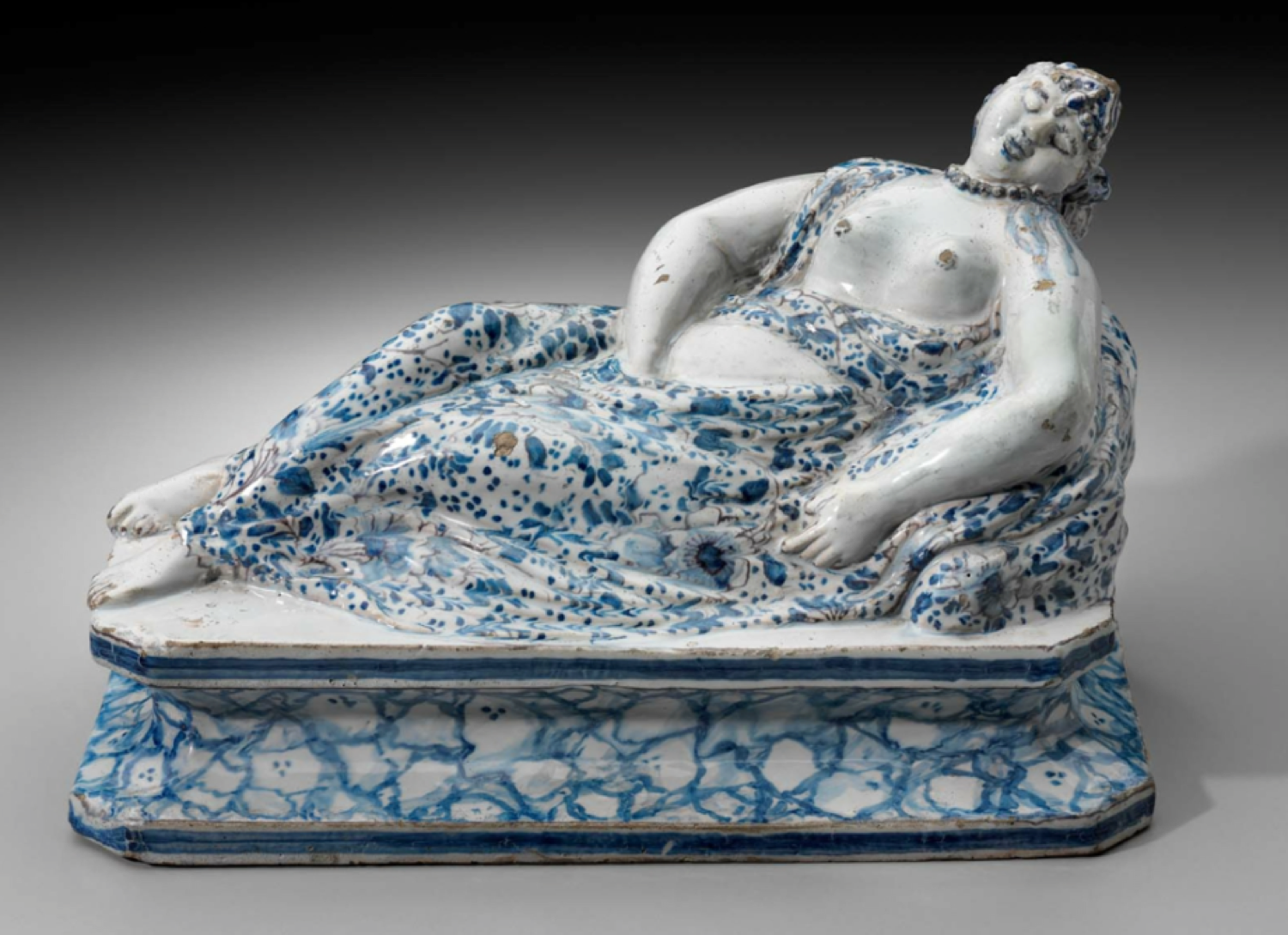
Boston Museum of Fine Arts, sold to Edward Pflueger, donor.
Modeled by Ulrich von Dassel, tin-glazed faience, circa 1750.
Original Laminated Bentwood Armchairs
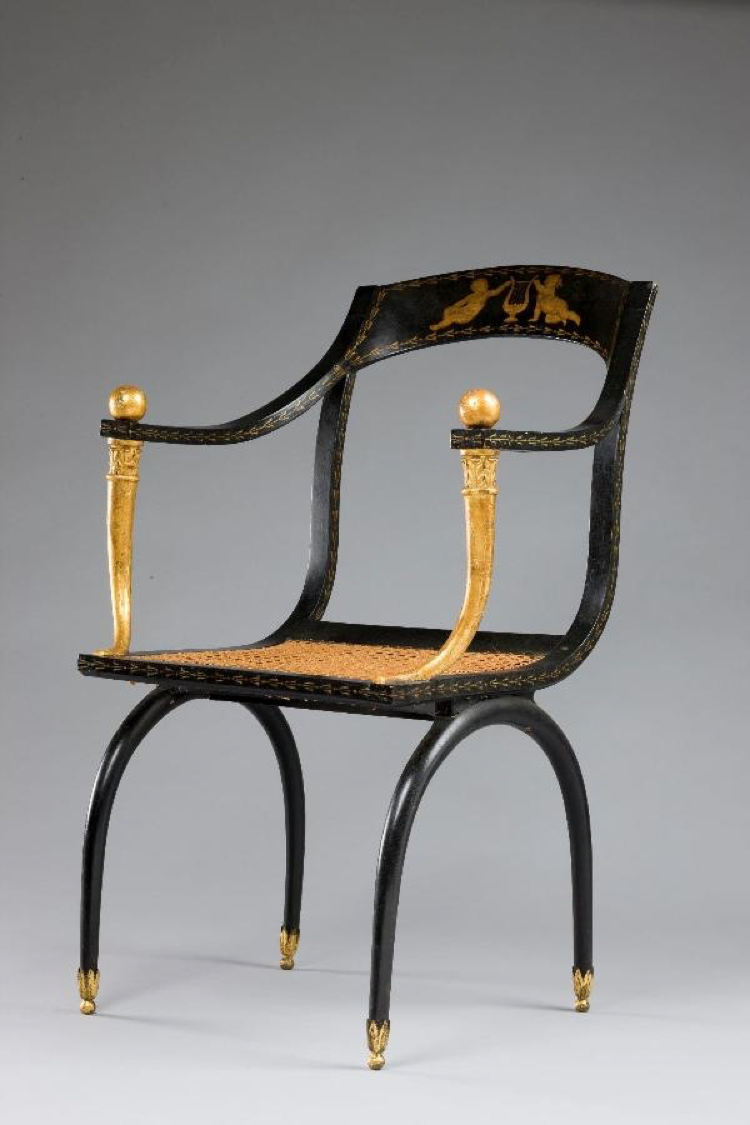
One pair sold to Carnegie Museum of Art
One pair sold to Minneapolis Art Institute.
John Joseph Chapius (1765-1864), Belgian cabinetmaker
Set of Four Bentwood Armchairs, circa 1810-1815

Delft Dishes

Sold to Kendall Whaling Museum.
One of Twelve Delft Dishes, circa 1761-65, made by “De Porceleyne Bijl,” Delft, attributed to Elsabeth Elling, after the series of 16 prints by Adolf van der Laan after Sieuwart van der Meulen.
Rare American Art Pottery – Aesthetic Movement
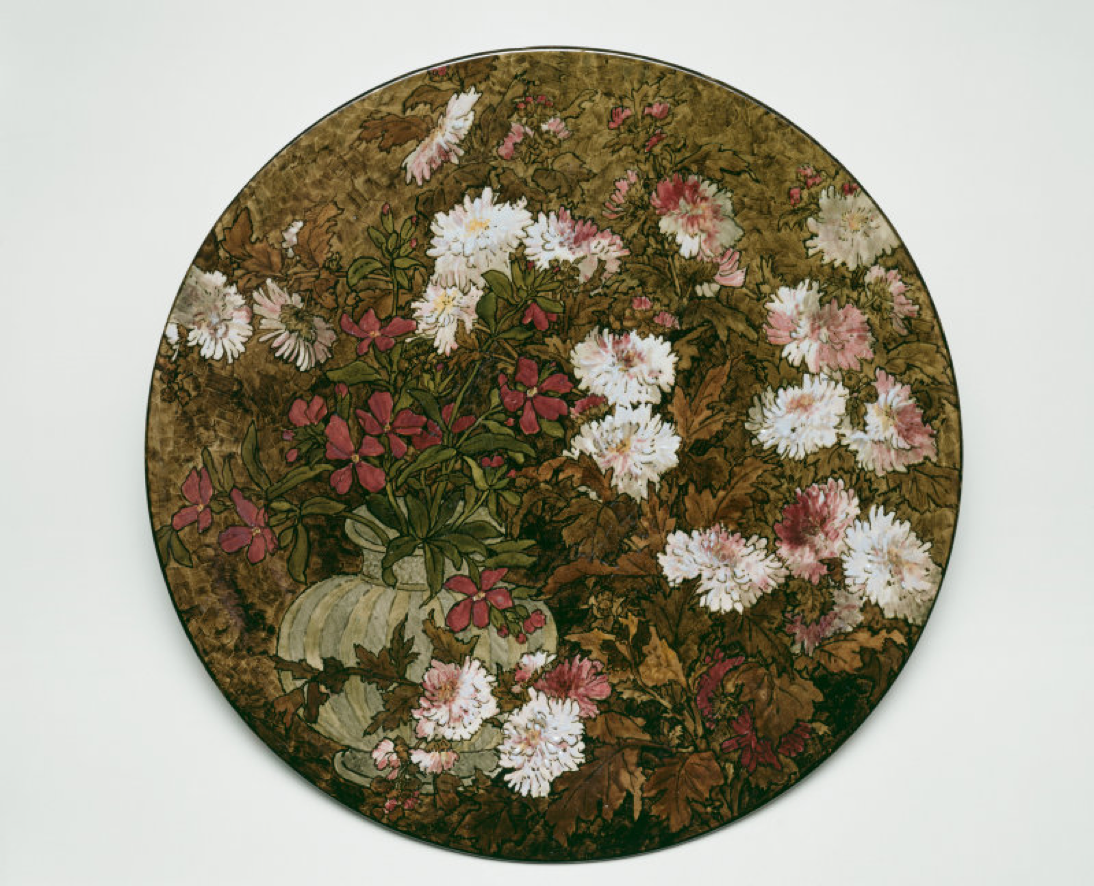
Sold to the Chicago Art Institute in 1998
by John Bennett, dated 1879.


Early East Indian Silk Needlework Embroidery

Sold to Peabody Essex Museum.
Silk on cotton ground, from Vizagapatam, circa 1730.
Portrait of William Klapp
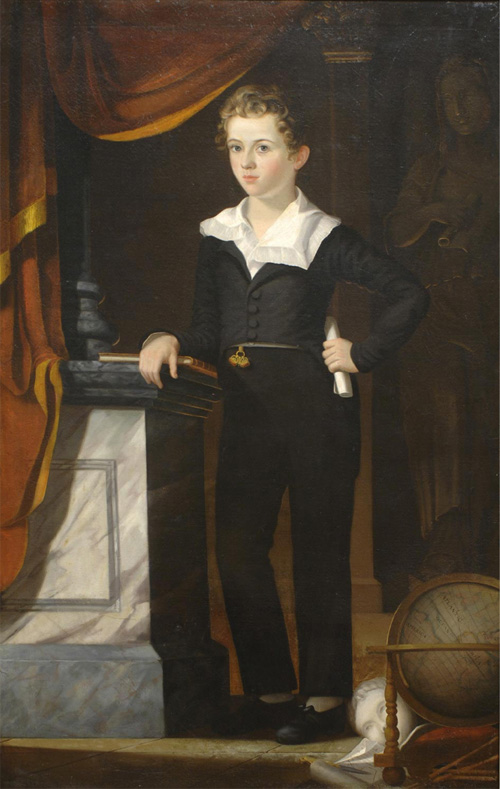
Sold to the Pennsylvania Museum of Art.
by Robert Street (1796-1865)
Leon & Harriet Pomerance Collection
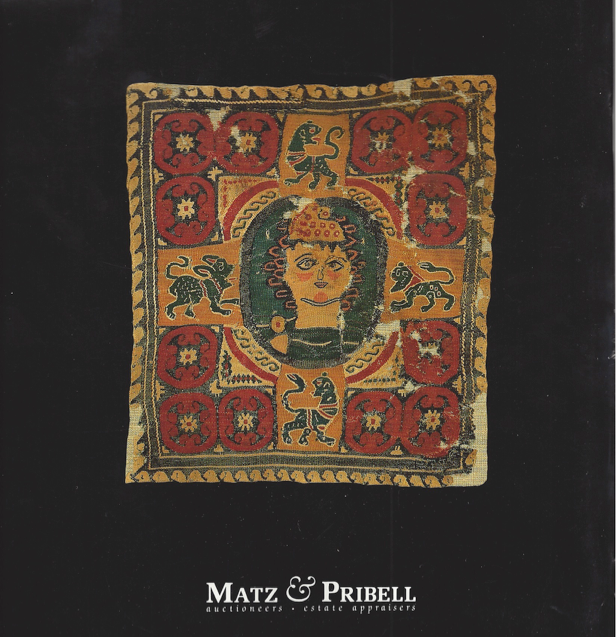
Coptic Tapestry Woven Panel, 3rd-5th century AD
Fascinating collection of tribal and modern art, baroque and modern furniture, sponsors of the Minoan Royal Palace excavation in Crete, Kato Zakros.

William Edmondson Folk Art Sculpture
Girl with Braid
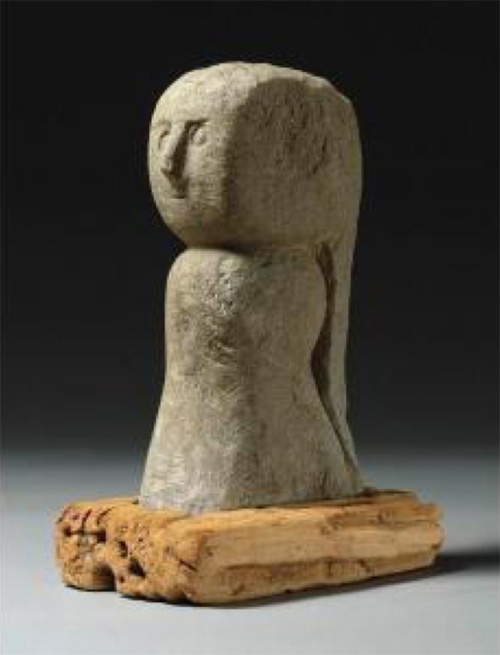
William Edmondson, (1874-1951) an African-American folk art sculptor, was the first African American artist to be given a one-man show at the Museum of Modern Art in New York City.
Provenance: From descendants of Peggy Bacon (Ash Can School) & Alexander Brook, both American painters who purchased directly from William Edmundson
Items from the Masterton Dusenberry House

Portrait of John Morison Masterton by William R Hamilton in 1838, who painted eleven paintings for the Masterton family.
Exhibited at New York National Academy of Design 1838.

Rare artist’s business card, found within a wealth of period household items, which also included many desirable paintings collected by the Dusenberry family at turn of the century.

Rare silversmith receipt, 1834, for silver purchased by Masterton, 1834, together with five dessert spoons described in document, by William Thomson.

Rare photo of inflating balloon circa 1860, along with daguerreotypes and tintypes, including many early tennis club photograph circa 1885


“Tree of Life” Needlework Sampler
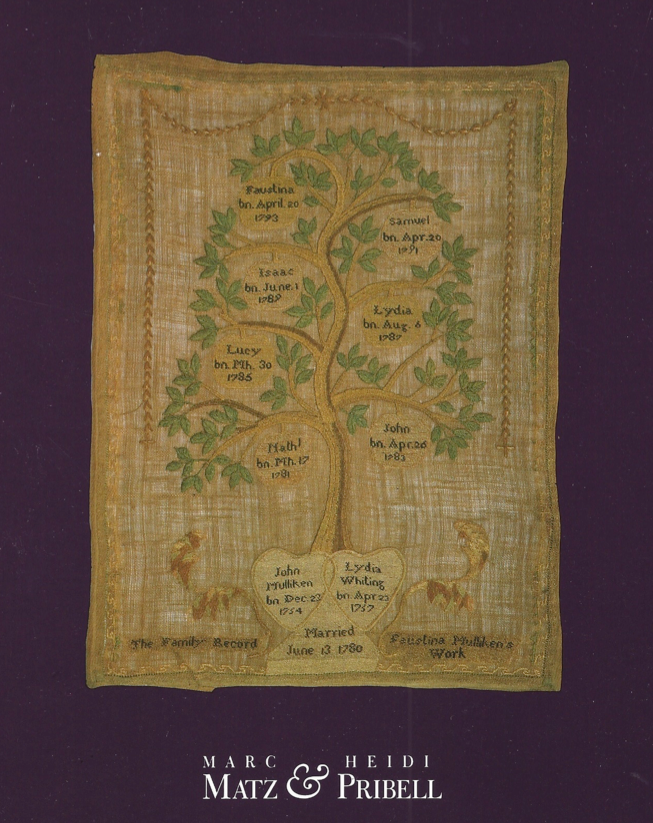
A Mulliken Family Record, Lexington, Massachusetts, of a rare group from the Lexington and Concord area. Made by the youngest daughter, Faustina, of John Mulliken and Lydia Whiting.
The Mulliken Family’s home and clock shop were famously set fire by British Troops April 19th, 1775, following the first engagements with the Colonial militias in Lexington & Concord. The scene of the burning is preserved in Amos Doolittle’s famous line engraving “A View of the South Part of Lexington, 1775” John Mulliken, case maker for his father Nathaniel’s clocks, likely made the coffins to bury the Lexington provincials who fell in action during the first engagement of the War of Independence.
Boston Classical Mirror
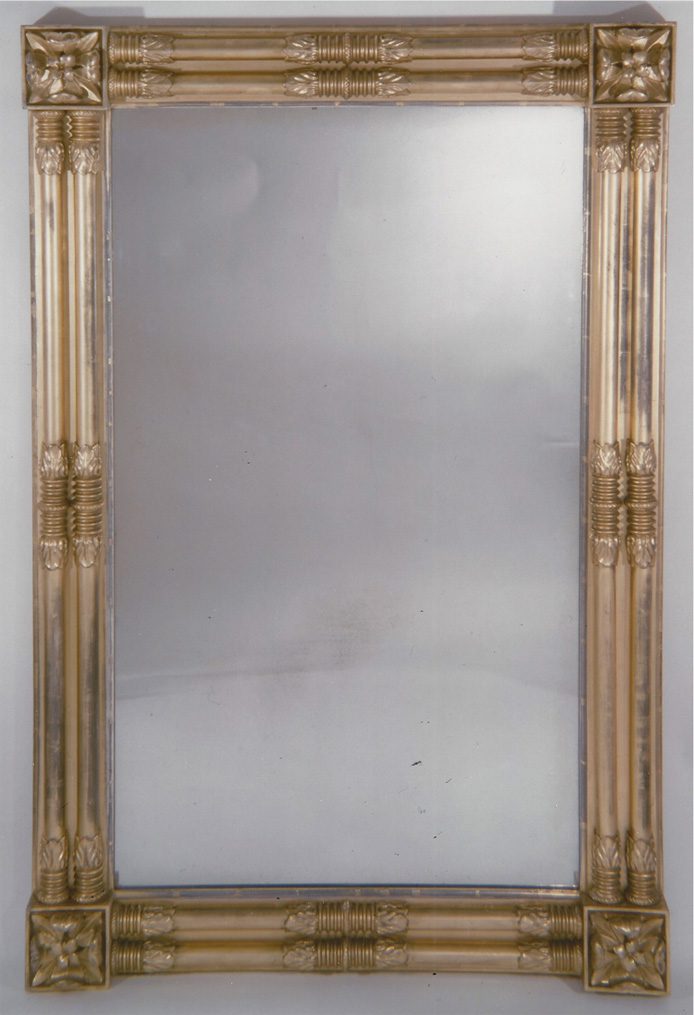
By F. Hubbard & Co., with maker’s label, “Guilder to the Trade, 8 Bromfeild Street”
Heretofore, objects from this company were unknown. Label affixed to back was not visible to naked eye.

Gifts from Alexander Calder

Miniature Standing Mobile, with accompanying drawing signed “Sandy”
Silver Spiral Brooch
Silver Monogram Brooch
Silver Mortar & Pestle Brooch

Mrs. Robbins with Alexander Calder, circa 1950
Gifts to Ruth Robbins, his New York pharmacist, obtained from her son-in-law.
Matz & Pribell Inventory






Architectural Digest Editorial, July 1996


Architectural Digest Editorial, May 1995



House & Garden Editorial, December 1991


Cornelia Van Rensselear Hartman
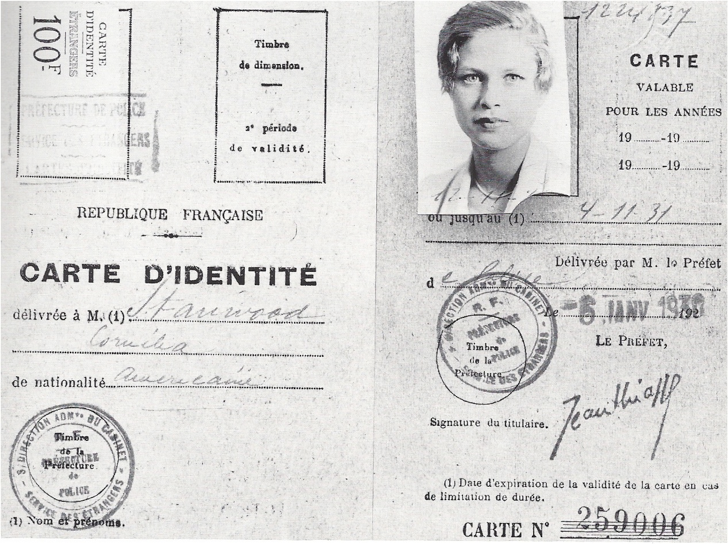
Cornelia Van Rensselear Hartman descended from two American families whose settlement and histories were contemporary with the foundations of the Republic – the Carroll family of Maryland and the Van Rensselear family of New York. Her collections contained a wealth of Carroll and Van Rensselaer family history, and were sold. Her partnership with Count Lorenzo Paolozzi opened offices in Boston, Washington DC, and Rome where their clients included many notable politicians, journalists, foreign diplomats and celebrities.

Mid-Century Cocktail Table, design by Paolozzi and Hartman

Cornelia and her brother as young children.


His Excellency George Washington Esquire, Mezzotint dated 1780, by Charles Wilson Peale

Extremely Rare Federal Period Print, published by John Binns 1819, in it’s original frame, The Declaration of Independence.

Charles Carroll, signer of the Declaration of Independence.
(letter from President James Monroe May, 1818.)

General Robert Van Rensselear (1740-1802) family crest on fine
American silver ladle, circa 1790.


Hosea Dugliss Looking Glass
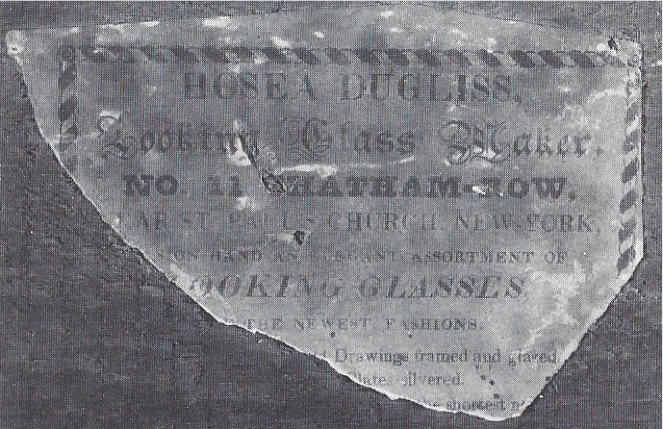
“Always on hand an elegant assortment of looking glasses of the newest fashion.”
“11 Chatham Row, near St. Paul’s Church, New York”

Identical Mirror in Greek Revival Parlor, American Wing, Metropolitan Museum of Art is attributed to Isaac Platt, based on a not identical signed Issac Platt mirror found at the Munson-Proctor-Williams Institute.

